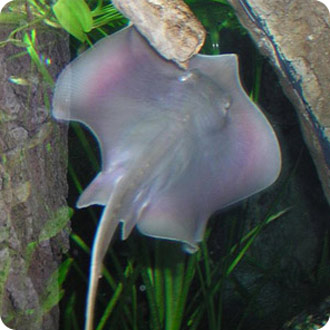Imagine trying to adapt to life on Mars. One might think this would be a difficult feat. Physiologically, a fish being able to live in both fresh and salt water may be just as difficult! This is because saltwater and freshwater environments present very different challenges to fishes due to two related processes: osmosis and diffusion.
 An example of a euryhaline species: Atlantic stingray Dasyatis sabina. Photo: Chris Tubbs
An example of a euryhaline species: Atlantic stingray Dasyatis sabina. Photo: Chris TubbsBasically, both water and salt molecules tend to move from high concentrations to low concentrations, evenly distributing themselves between two compartments. So when a fish is in fresh water, its cells, which contain more salt than the water, tend to lose salt but they gain water. The opposite happens in the sea. There, fishes tend to gain salt but lose water. Both situations make it difficult for fishes to maintain healthy levels of water and salts.
Because of these challenges, most fishes are adapted to live in one environment or the other. However, a small number of species can survive in both fresh and salt water! These euryhaline species overcome the challenges by careful regulation of specialized steroid hormones called mineralocorticoids. In salt water, mineralocorticoids cause specialized cells in the gills, called chloride cells, to pump excess salts out of the blood and into the environment. In fresh water, these hormones help change the direction of salt pumps so that the fish can bring in the salts it needs. By regulating their salt in this way, they also partly counteract the changes in water caused by osmosis.
By maintaining this “balancing act”, euryhaline fishes need not worry about the water conditions as they chase diverse prey, escape predators, and explore a wide range of new habitats.
copyright 2006, The University of Texas Marine Science Institute


